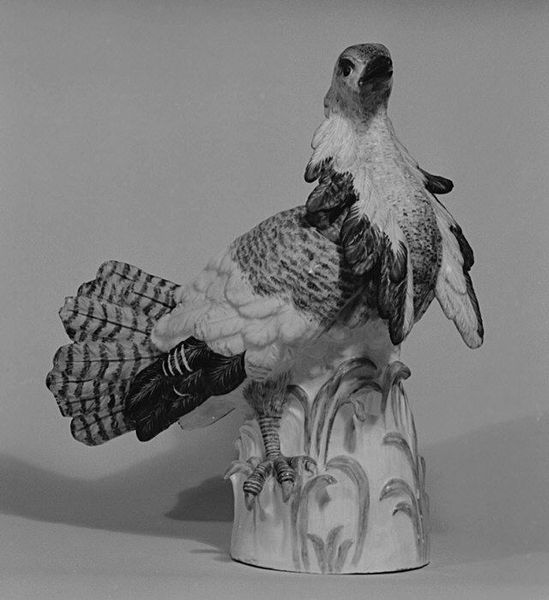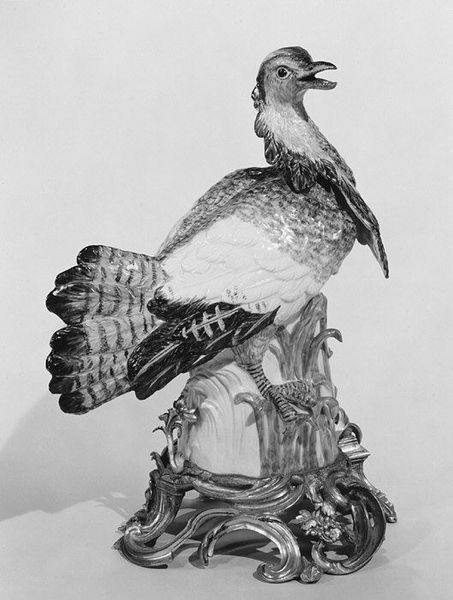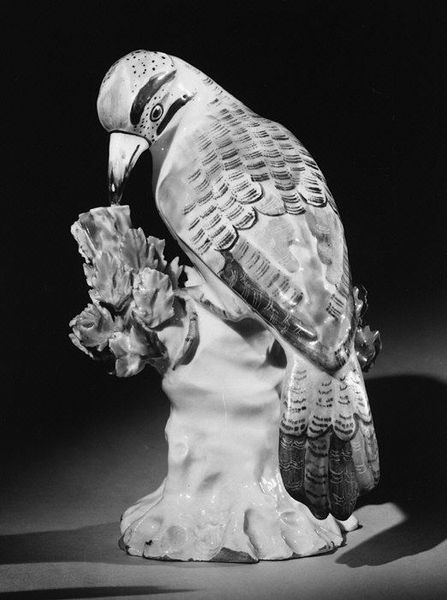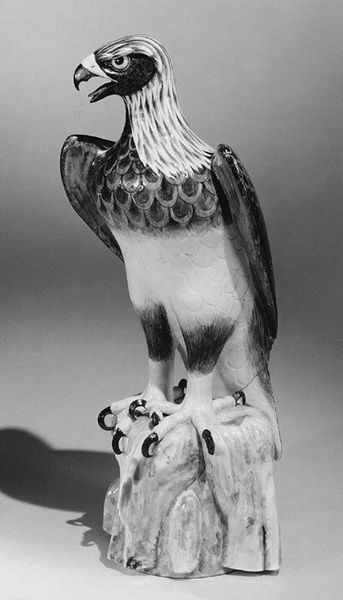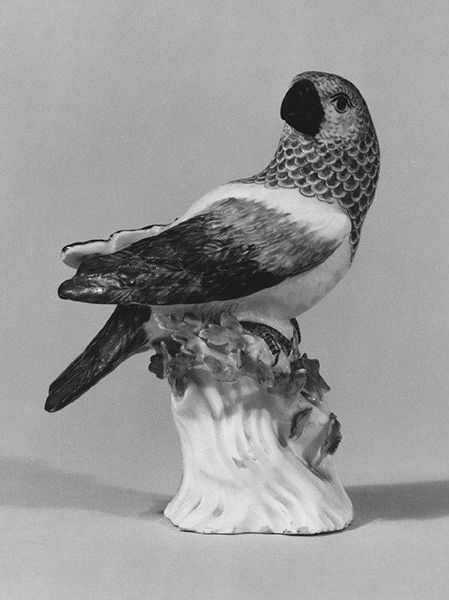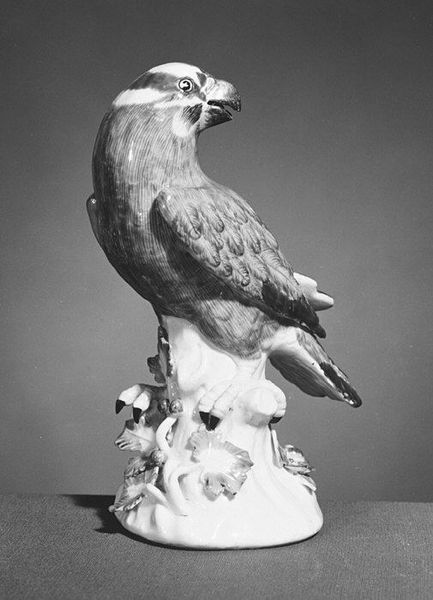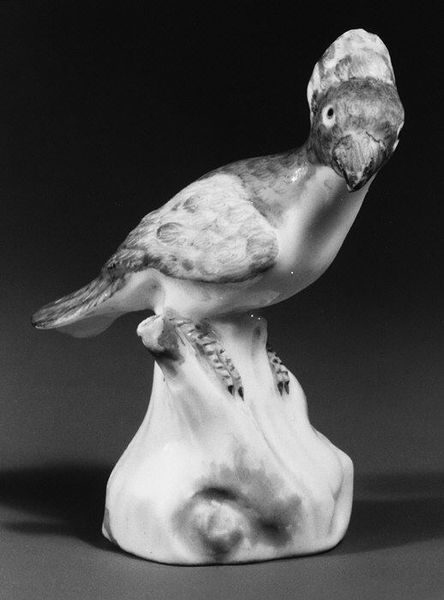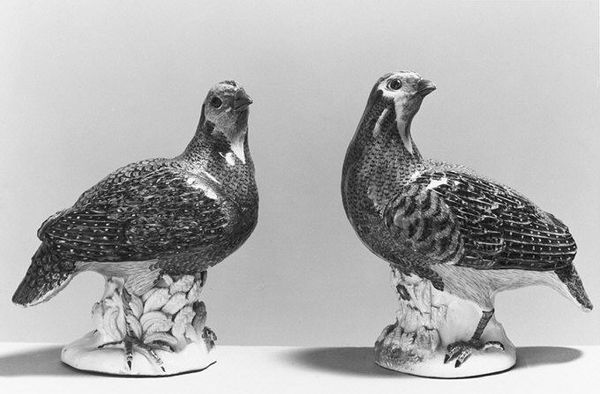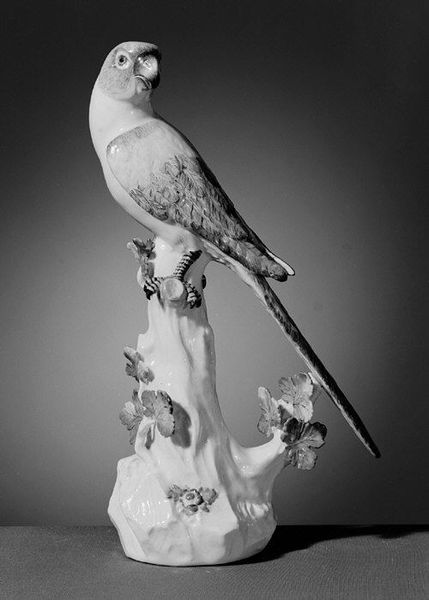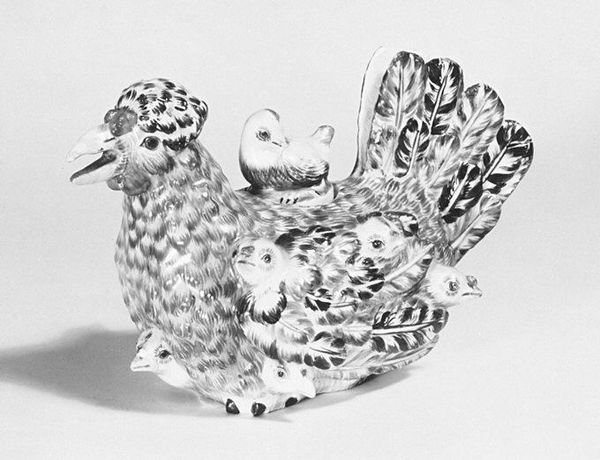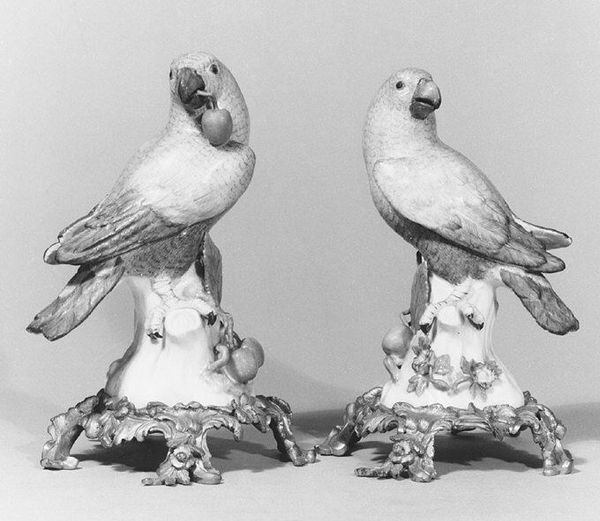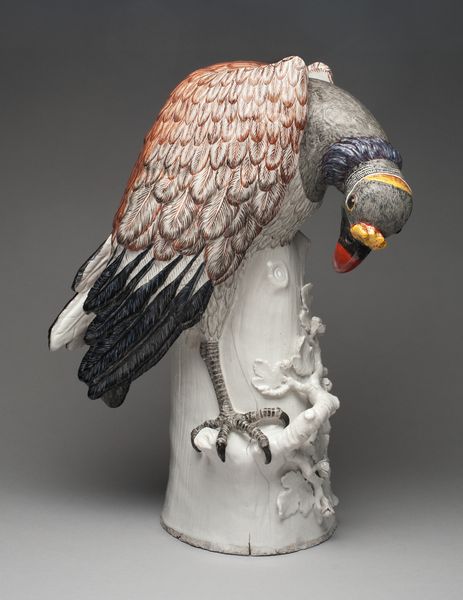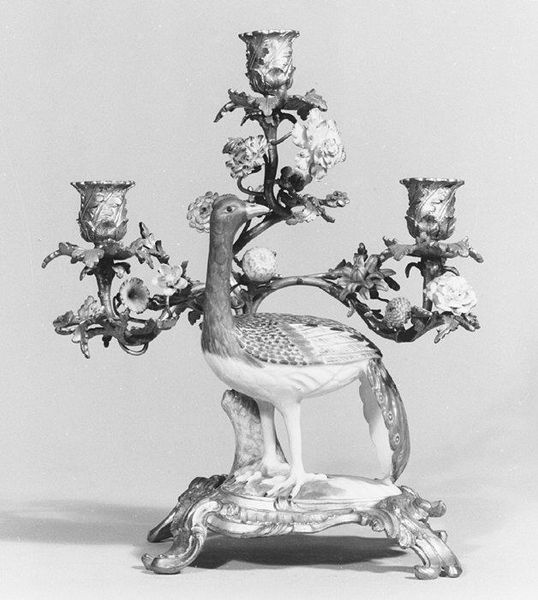
ceramic, porcelain, sculpture
#
baroque
#
sculpture
#
ceramic
#
bird
#
porcelain
#
sculpture
#
decorative-art
Dimensions: Height (with base): 20 1/2 in. (52.1 cm)
Copyright: Public Domain
Editor: So, this is the “Ruffed Bustard,” one of a pair, made at the Meissen Manufactory sometime between 1727 and 1737. It's porcelain, which gives it this really delicate quality despite the bird’s sort of puffed-up stance. What do you see as most significant about this piece? Curator: Well, let's consider Meissen porcelain at this time. Its production depended heavily on the extraction of kaolin and the skilled labor of artisans. How does that materiality and labor affect our understanding of the final product? Editor: I see what you mean. It’s easy to just see a pretty bird, but thinking about the mining and the manufacturing process makes it much more complex. Did the royal patronage influence that relationship between materials and craft? Curator: Absolutely. Royal patronage created a system of skilled workshops but also introduced this dynamic where art became a symbol of status. Notice how porcelain imitates forms usually reserved for more 'noble' materials like bronze. How does the medium shape the message? Editor: It's fascinating how porcelain, which we think of as delicate, could also project power and wealth back then. Curator: Precisely. Think of the social rituals linked to objects like these: dining, display. It’s less about pure artistry, and more about the world this bustard inhabited, the messages of consumption, the access, and ultimately, what labor afforded it to come to be. What have you gleaned, thinking in that context? Editor: That the bustard embodies an intricate dance of social standing, labour, and artistic creation within the upper echelons of Baroque society. I’ll never look at porcelain the same way again! Curator: Exactly, analyzing its creation unveils stories woven into its very material form, a powerful testament to both the object and it's cultural legacy.
Comments
No comments
Be the first to comment and join the conversation on the ultimate creative platform.
